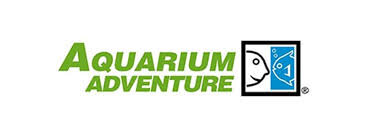Garden Ponds
Outdoor water ponds or water gardens are becoming the fastest growing backyard garden feature in the country. They are easy to set up and maintain, particularly if you follow the same rules and guidelines for keeping an aquarium.
You will want to determine the best size, shape and location for your particular situation. The decision to keep fish means installing a filter and providing on-going maintenance to insure adequate water quality. Planting the pond is the most enjoyable part because there are so many plant choices and everyone gets to create their own garden!
Determining, Location, Size and Shape
Take time to plan the location of your pond. For maximum enjoyment, several viewing points should be considered. Locations near trees can pose a problem. Encroaching roots can damage the bottom of the pond and leaves that fall in can clog the filter as well as add too many nutrients to the pond. Low lying areas should also be avoided. During heavy rainfall, the runoff from high ground will collect in and overflow your pond. Close proximity to electric is another important factor in the final decision regarding location.
To determine the size and shape of your pond, map out the outline in your yard using a rope or spray paint. You will need to know the volume of the pond to choose the correct filters, plants, water conditioners and fish. To determine the volume, use the following equations: Example: a pond that is 11’ long by 5’ wide by 2’ deep
Length X Width = Surface Area
Example: 11’ x 5’ = 55’
Surface Area X Depth = Cubic Feet
Example: 55’ x 2’ = 110’
Cubic Feet X 8 Gallons = Volume
Example: 110’ x 8 = 880 gallons
45 mil EPDM soft liner is a very good choice for the lining of the pond. They are easy to install, offering tremendous flexibility on sizing and free form. Use the following equation to determine the liner size.
Length + (2 x Depth) + 2’ (for border) = Total Length
Example: 11’ + (2 x 2) + 2’ = 17’ Total Length
Width + (2 X Depth) + 2’ (for border) = Total Width
Example: 5’ + (2 x 2) + 2’ = 11’ Total Width
Pumps and Filters
Water pimps are used to provide water circulation and movement within the pond. This helps to prevent the pond from becoming stagnant and to increase gas exchange within the pond (oxygen in and carbon dioxide out). The pump size should be such that it turns over the entire pond ½ to 1 time per hour. For example, an 800 gallon pond should use a pump capable of 400 to 800 gallons per hour. Always use a stronger pump on ponds that are heavily stocked with fish. Pumps are generally used in conjunction with fountains, waterfalls and filters. Filters need to be used when keeping fish. Filters which can be mechanical, biological and chemical, work the same way as aquarium filters and need to be maintained the same way.
Internal filters are submerged in the pond and connected to the submerged water pump. External filters sit outside the pond and are connected to a submerged water pump in the pond. The filter can be hidden or camouflaged with plants, bushes and rocks or buried in the ground. The water, after it passes through the filter, is returned to the pond through an overflow or in a waterfall.
Other Equipment
As with any hobby or project, there are always some additional options available to make your water garden even more enjoyable and easier to maintain. Accessories such as test kits for monitoring water quality; fish nets for catching and moving fish; water conditioners to dechlorinate and condition the water for fish and plants; pond nets/skimmers to help keep floating debris and leaves out of the pond; and finally the ultimate water garden landscaping equipment-lights around the outside of the pond and submerged in the pond for very special accent effects.
